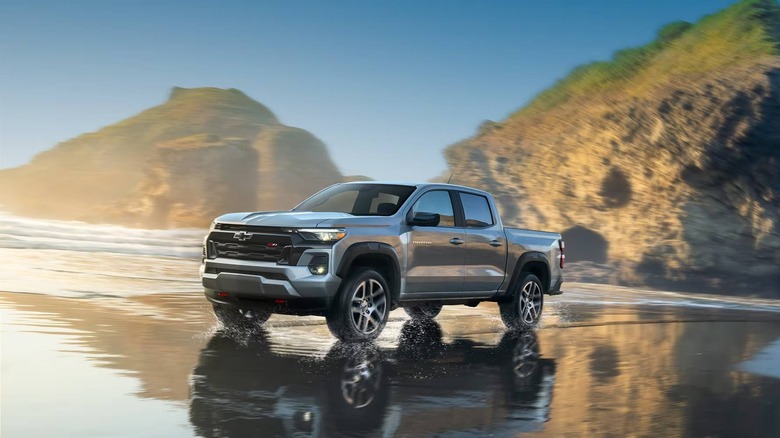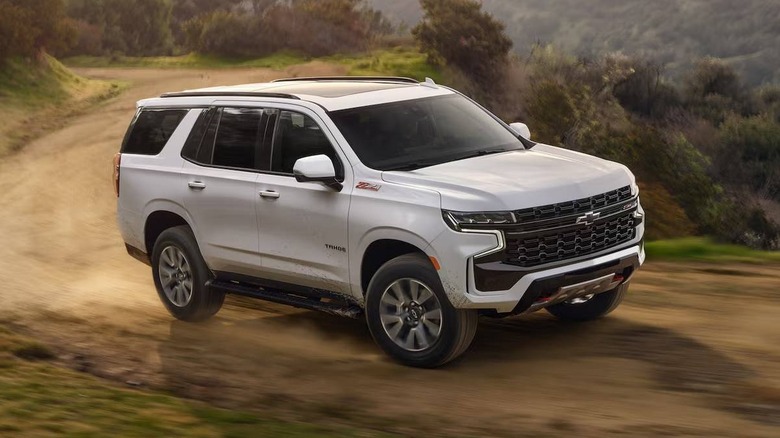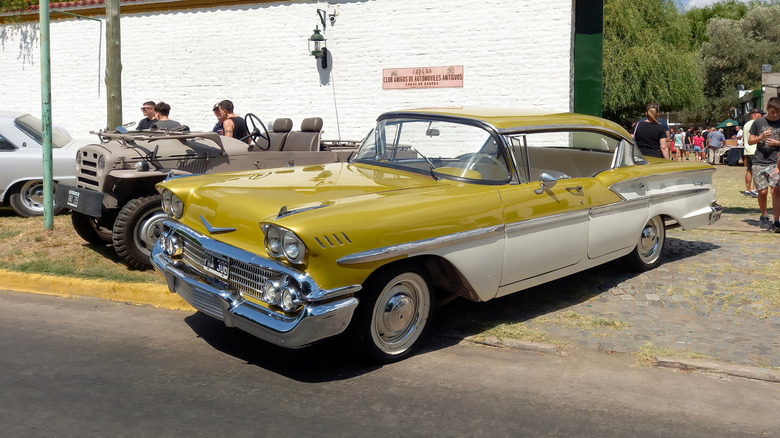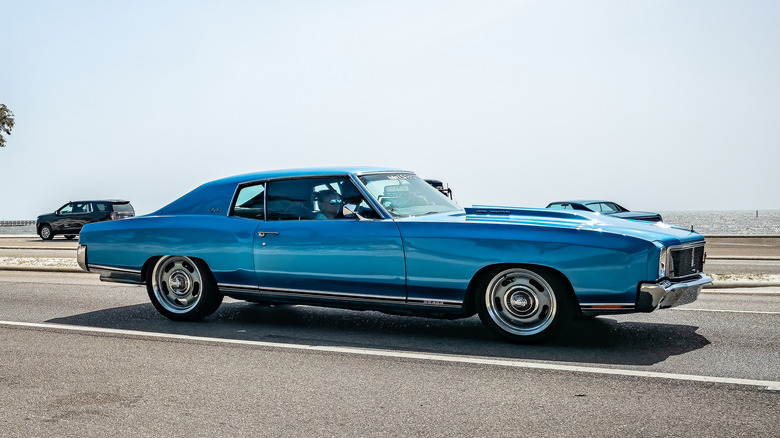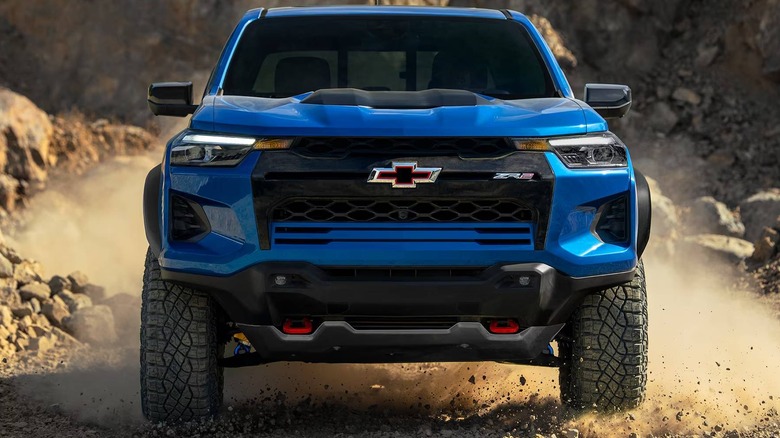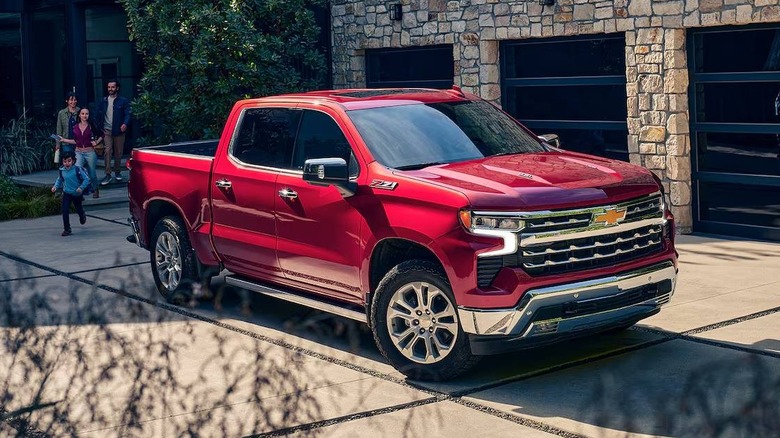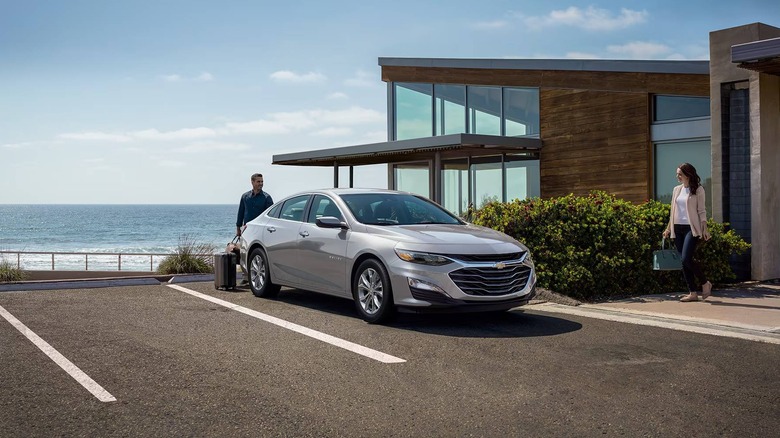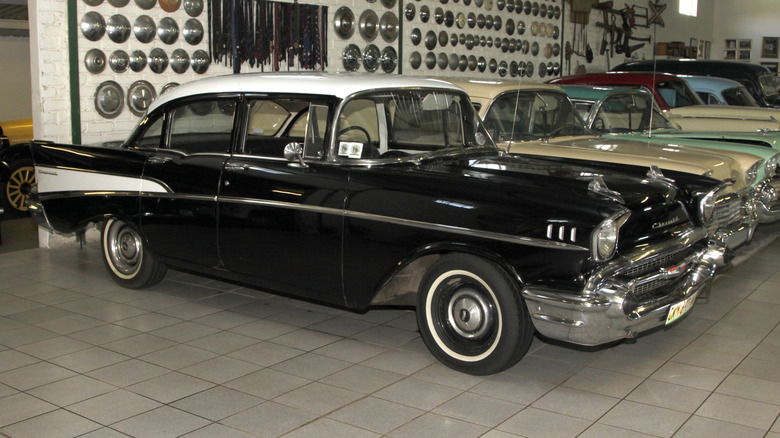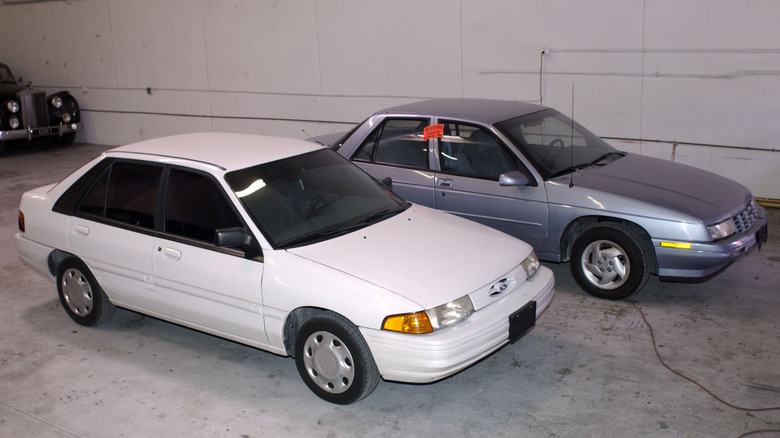8 Chevrolet Cars Named After Real Places
For over a century, automakers have grappled with the challenge of finding the perfect names for their vehicles — a task that is often more complex than it seems. Some automakers opt for aggressive, speed-inspired titles like the Hyundai i20 N and VW Polo GT, while others choose car names with deeper meaning, such as the Toyota Camry (derived from the Japanese word for "crown") or Ferrari Purosangue ("thoroughbred" in Italian). Meanwhile, some cars have more striking names that emphasize their raw power and performance, like the Dodge Challenger SRT Hellcat and the Ford Mustang Shelby GT500.
A great car name can elevate a vehicle's image, as seen with icons like the Plymouth Road Runner, Corvette, or Wrangler. On the other hand, poor or awkward car names — like Studebaker Dictator or Ford Probe — can miss the mark entirely. Over the years, automakers have drawn inspiration from animals, alphanumeric codes, and symbols of strength and motion. Another common trend is naming cars after real places, such as the Dodge Dakota and Kia Rio. Chevrolet has embraced this tradition as well, with several of its models named after actual locations.
Chevy Tahoe
The Chevrolet Tahoe is one of the brand's best-selling full-size SUVs. The Tahoe was introduced to the market in 1995 as a replacement for the Chevy Blazer, becoming the first four-door version of the model. This model is named after Lake Tahoe, a stunning freshwater lake straddling California and Nevada.
True to its rugged nameplate, the Tahoe is designed for capability. It offers three rows of seating and comes with three engine options: a 5.3-liter EcoTec3 V8, a more powerful 6.2-liter EcoTec3 V8, and a 3.0-liter Duramax turbo-diesel. These engines are paired with a 10-speed automatic transmission and 2WD/4WD drivetrain. With the Max Trailering Package, the Chevy Tahoe can tow up to 8,600 pounds, making it a solid choice for road trips, boats, or campers.
In addition to power, the Chevrolet Tahoe includes impressive safety features like lane keep assist with lane departure warning and front pedestrian braking. Another notable feature is the IntelliBeam headlight technology, which automatically switches between high and low beams. As one of Chevy's modern nameplates inspired by real places, the Tahoe certainly lives up to its adventurous reputation.
Chevy Bel Air
The Chevrolet Bel Air was a beloved car and status symbol. Produced between 1950 to 1981, the Bel Air name was synonymous with style and luxury. It often featured chrome trim and unique body designs that set it apart from the rest of the brand's lineup and everything else on the road. This model was named after the prosperous Bel Air neighborhood in Los Angeles. Chevy wanted the Bel Air model to capture a sense of exclusivity, clear skies, and aspirational living — much like its namesake, which sits alongside Beverly Hills and Brentwood as part of L.A.'s elite "Three Bs."
Aside from its eye-catching design, the Chevy Bel Air offered a range of awesome engines throughout its seven generations. These included inline six-cylinder engines, small-block V8s, and powerful big-block V8s. One of the notable powertrains was the 409-cubic-inch V8, which kicked out 409 horsepower in the 1962 model. Even though the Bel Air was discontinued in the early 1980s due to declining demand for large cars, it remains an iconic American classic car.
Chevy Monte Carlo
The Monte Carlo was a stylish two-door coupe with over six generations produced from 1970 to 1988 and again from 1994 to 2007. It was introduced as Chevrolet's competition to the Pontiac Grand Prix. The Chevy Monte Carlo got its name from the actual Monte Carlo, a glamorous city in Monaco, known for its wealth, high-stakes gambling, and lavish lifestyle. The car's name was intended to evoke a sense of prestige — qualities that resonated with its namesake.
However, the Chevy Monte Carlo was never quite on par with the luxury cars that cruised the streets of Monaco, such as the Buick Regal, Pontiac Grand Prix, and Oldsmobile Cutlass Supreme. Nevertheless, it still gained a strong following. Throughout its lifetime, the Monte Carlo offered a range of engines, from V6s to powerful V8s, including the standard 250 horsepower 350-inch Turbo-Fire small-block V8, 262-inch (4.3-liter) Chevrolet V6, and the 305-inch (5.0-liter) Chevrolet V8. Despite its discontinuation, the Monte Carlo remains a well-remembered nameplate that blends American muscle with a European-inspired grandeur — at least in spirit.
Chevy Colorado
The Chevrolet Colorado is among the most popular pickup trucks sold in the United States, alongside the Ford Maverick and the GMC Sierra. This rugged mid-size pickup takes its name from the state of Colorado, which is home to the towering Rocky Mountains and vast outdoor landscapes. This state is known for its adventure, freedom, and exploration. This aligns with the spirit of a truck built for both work and off-road excursions.
The Colorado is offered in regular, extended, and crew cab configurations and comes in 2WD and 4WD variants. The ZR2 model pushes off-road capability further with rugged styling and enhanced terrain-conquering features. Over the years, the Chevy Colorado has been available with various gasoline and diesel powertrains. Notable options include the 308 horsepower 3.6-liter V6 and the 181 horsepower 2.8-liter Duramax turbo-diesel. However, the 2025 model streamlines its lineup to a single 2.7-liter TurboMax inline-four, which kicks out 310 horsepower and 430 pound-feet of torque.
Beyond performance, the Colorado pickup offers modern technology, such as the Chevrolet Infotainment 3 System, as well as Wireless Apple CarPlay and Android Auto. The Chevy Safety Assist suite includes features like the forward collision alert and lane-departure warning.
Chevy Silverado
The Chevrolet Silverado is a force to be reckoned with in the American pickup market, and one of the coolest pickups we drove in 2024. This truck continuously competes with the Ford F-Series for the title of best-selling full-size truck. The Silverado has evolved into a dominant heavy truck and is available in multiple variants, including the Rally Edition, Midnight Edition, and Custom Sport HD.
This Chevy truck's lineage dates back decades, but the Silverado name appeared in 1975 as a premium trim level for the Chevrolet C/K "square body" trucks. The name itself was inspired by Silverado, California, a historic silver-mining town bedded in the Santa Ana Mountains. The name captures the hardworking essence of Chevy's pickups, and it became so popular that Chevrolet officially adopted it as the model name in 1989.
Under the hood, the Silverado offers a range of powerful engines. These include the 310 horsepower 2.7-liter turbocharged inline-four, as well as V8 options, such as the 5.3-liter EcoTec3 V8 with 355 horsepower and the 6.2-liter EcoTec3 V8 with 420 horsepower. At the top of the powertrain lineup is a Supercharged 6.2-liter Viol engine, which delivers 650 horsepower and 650 pound-feet of torque.
Chevy Malibu
The Malibu has been a key player in Chevrolet's lineup for decades. Like the Silverado, the Malibu evolved from a trim level of the Chevelle to a standalone mid-size sedan model. Today, it is one of the last remaining passenger cars in Chevy's portfolio, since they discontinued the Cruze in 2019 and the Spark in 2022. This, interestingly, proves the Chevy Malibu's popularity in a market that is largely dominated by trucks, SUVs, and crossovers.
This model was named after Malibu, which is a coastal town in California that is known for its sun-soaked beaches, laid-back lifestyle, and celebrity appeal. The Malibu nameplate has an image of surf, sand, and scenic ocean drives. Iconic beaches like the Zuma, Leo Carrillo, and Surfrider align with the upscale essence Chevrolet sought to capture in the car's branding.
Currently, the Chevy Malibu is available with a sole 1.5L turbocharged four-cylinder engine, which produces 163 horsepower and 184 pound-feet of torque.
Chevy Biscayne
The Chevrolet Biscayne was a full-size car produced from 1958 and 1972. Unlike the Bel Air, which was meant to stand out from its rivals, the Biscayne was a laid-back model, with minimal chrome and a no-frills interior. Serving as Chevrolet's entry-level model, the Biscayne was a budget-friendly option for families and fleet buyers. In 1960, the brand released a more stripped-down version of the Biscayne. This model was called the Fleetmaster and was intended for government and commercial buyers.
The Chevy's Biscayne name comes from Biscayne Bay, a scenic coastal area near Miami, Florida. The name evoked images of sun, sea, and a relaxed beach lifestyle, and added a sense of tropical charm to a car otherwise known for its simplicity. The name was first applied to a concept car at the 1955 Motorama car show — it originally had a European-inspired luxury four-door hardtop. However, the production of the Biscayne would take a more utilitarian approach.
Upon its official release in 1958, the Biscayne was affordable but wasn't the cheapest Chevrolet model. That title belonged to the Delray, which was a more stripped-down model with fewer features. The Biscayne was offered in a two-door sedan and a four-door sedan style. However, while station wagons were available at the Biscayne trim level, they were rebranded as Brookwood models.
Chevy Corsica
The Chevrolet Corsica was named after Corsica, a picturesque Mediterranean island that belongs to France. Like the island, this model was meant to evoke natural beauty, scenic coastlines, and a sense of adventure. However, despite its romantic and exotic name, the Corsica was more of a practical compact car than a breathtaking masterpiece. Chevy introduced the Corsica model in 1987, where it served as the replacement for the Chevrolet Citation. Designed as a front-wheel-drive economy car, the Corsica was available in four-door sedan style and briefly as a five-door hatchback from 1989 to 1991.
The four-door Corsica featured a clean, aerodynamic shape, which made it more visually appealing than the Citation. On the other hand, the hatchback had a large, curved glass rear window reminiscent of the Chevrolet Camaro. However, this version required air conditioning to maintain a comfortable cabin temperature, especially during the summer. Either way, the Corsica was offered with a standard 2.2-liter inline-four and an optional 3.1-liter V6. Buyers who opted for the latter paired with the five-speed manual transmission found it quick and responsive. While the Corsica was a reliable family car, it never lived up to the mystique and charm of its Mediterranean namesake. Plus, there were safety standards that would have required a full redesign of the Corsica. Chevy finally pulled the plug in 1996.
